Potatoes are one of the most common crops in the world, but do you know that you can grow this versatile vegetable without the demanding process of digging up? Aeroponics, a cutting-edge method of growing plants in an air or mist environment without the use of soil, is here to redefine your potato cultivation experience.
It’s a system where potatoes thrive suspended in air, receiving the perfect balance of nutrients and moisture. When you start establishing, you will realize it not only offers efficient space utilization but also allows for precise control over environmental factors.
Materials Needed
- Aeroponic System: Invest in a quality aeroponic system with misting nozzles or a fogger to deliver the nutrient-rich mist to your potato plants.
- Potato Seedlings or Tubers: Choose disease-free potato seedlings or cut seed potatoes into sections, each containing at least one eye or bud.
- Nutrient Solution: Opt for a well-balanced nutrient solution specifically formulated for potatoes or root vegetables.
- pH Kit: Maintain optimal pH levels (around 5.8 to 6.2) with a pH testing kit.
- Growing Medium: While not soil-dependent, a growing medium like perlite or coconut coir can help stabilize the plants.
- Grow Lights: Ensure adequate lighting, especially if you’re growing potatoes indoors. LED or fluorescent grow lights work well.
- Temperature and Humidity Control: Consider a climate control system, especially if growing potatoes in an enclosed space.
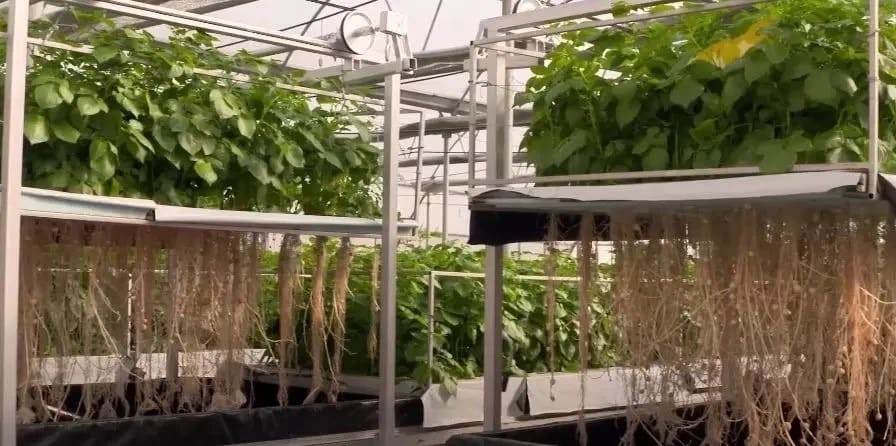
Grow Potatoes With The Aeroponic System
Step 1: Select Potato Varieties
When it comes to Aeroponic potato farming, not all varieties are created equal. You should opt for varieties that are well-suited for container or confined space gardening. Yukon Gold, Red Pontiac, and Kennebec are popular choices. These varieties tend to produce well in controlled environments, adapting seamlessly to the aeroponic setup.
Step 2: Plant Potatoes
- Prepare Seed Potatoes: If using whole seed potatoes, cut them into sections, ensuring each piece has at least one eye or sprout.
- Prep The Aeroponic System: Set up your aeroponic system, ensuring misting nozzles are evenly spaced.
- Insert Seed Potatoes: Place the seed potatoes into the designated slots or baskets of the aeroponic system. Make sure the eyes or buds are facing outward.
- Initiate Misting: Start the misting cycle. Potatoes, suspended in the mist, will develop roots in the air.
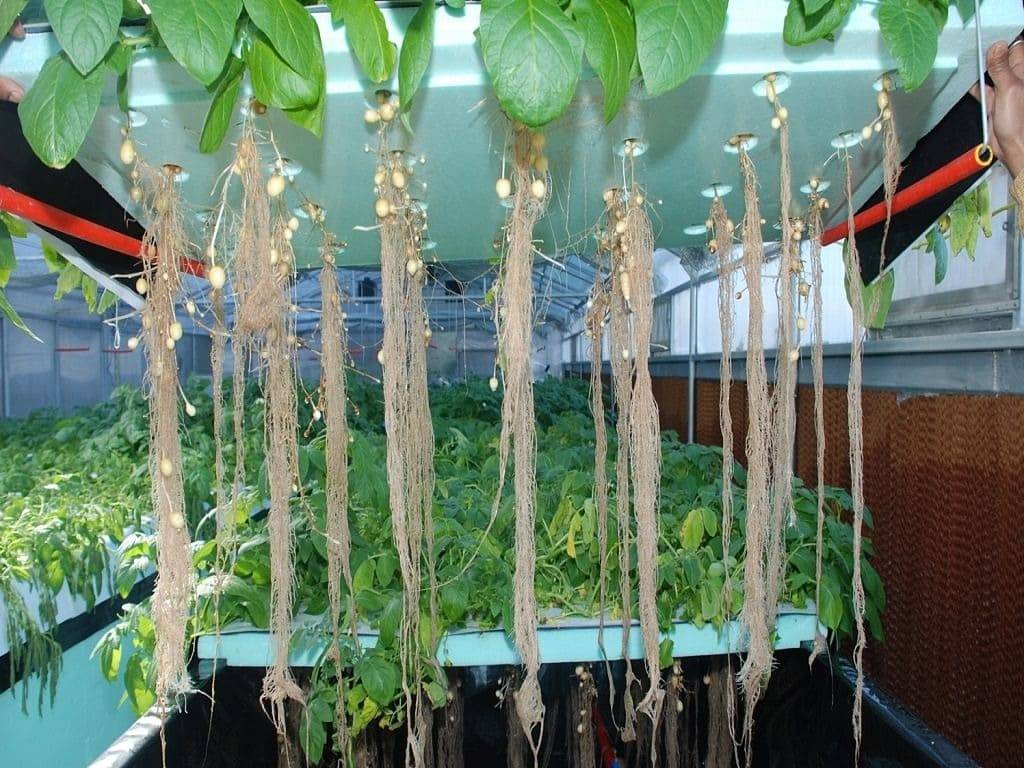
Step 3: Take Care Of Potatoes
1. Water
You need to provide adequate water to the roots of the potatoes by spraying them with a nutrient solution in the form of a fine mist. The mist should be delivered at regular intervals, depending on the type and size of the system. You can use a timer or a sensor to control the frequency and duration of the misting.
The water should be clean and free of contaminants, and the nutrient solution should be balanced and suitable for potatoes. You can check the pH and the electrical conductivity of the solution to ensure its quality.
2. Fertilizer
You can provide fertilizer for potatoes by adding it to the nutrient solution. The fertilizer should contain the essential macronutrients and micronutrients for potato growth, such as nitrogen, phosphorus, potassium, calcium, magnesium… You should also adjust the concentration of the fertilizer according to the growth stage and the environmental conditions of the potatoes.
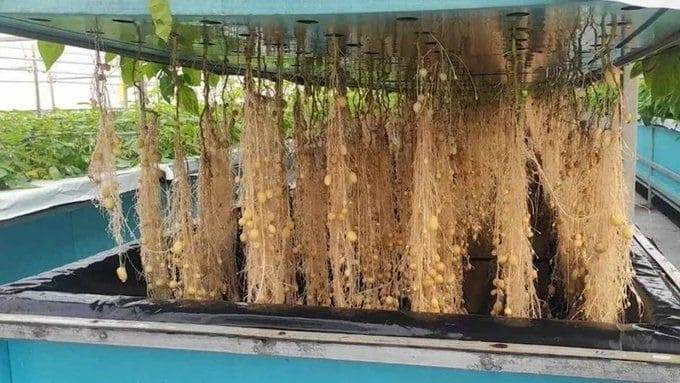
3. Temperature
You need to maintain an optimal temperature for the potatoes by controlling the climate inside the aeroponic system. The temperature should be within the range of 15°C to 25°C for the best growth and yield of the potatoes.
4. Pruning
Pruning can help improve the health and productivity of the potatoes by reducing the risk of pests and diseases, enhancing the air circulation and light penetration, and diverting the energy and nutrients to the desired tubers. You can use a sharp knife or scissors to cut off the unwanted parts of the plants and dispose of them properly.
Step 4: Harvest
Potato growth time varies with the variety and environmental conditions. On average, you can expect to harvest potatoes in 10-12 weeks from planting. After harvesting, take the net pots out of the system and shake the soil off the tubers.
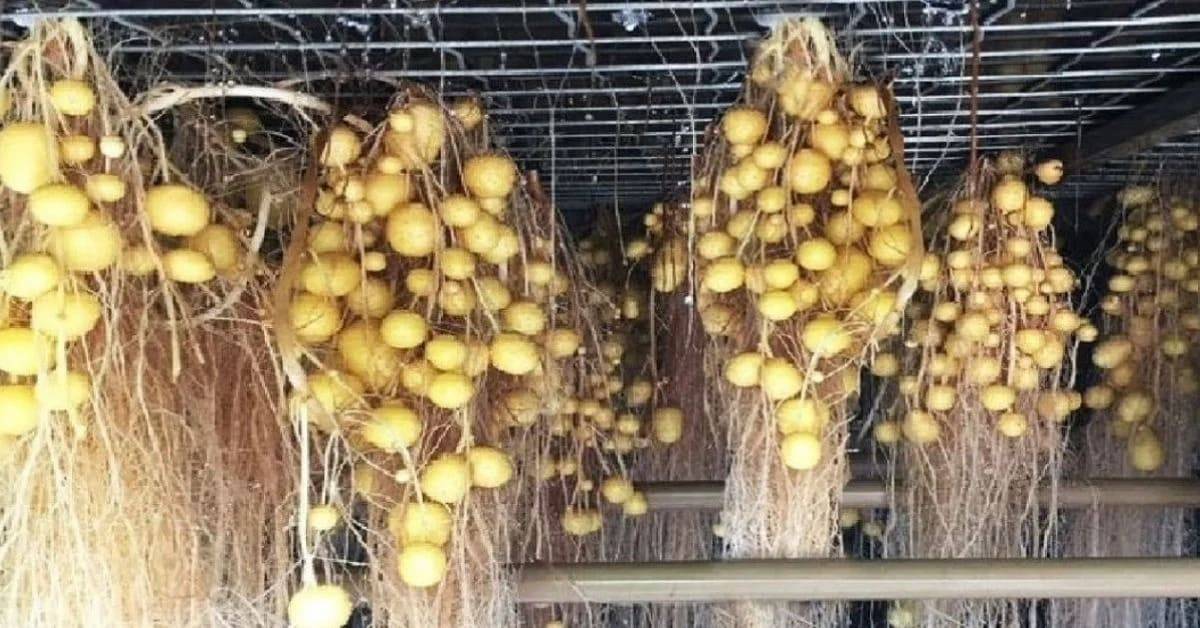
FAQS
1. How Often Should I Mist My Potatoes?
Aim for a misting cycle of 5-10 seconds every 5-10 minutes, depending on the growth stage and environmental conditions.
2. Can I Grow Potatoes Indoors With Aeroponics?
Certainly! Aeroponics is well-suited for indoor gardening. Just ensure adequate lighting and consider using grow lights if natural sunlight is limited.
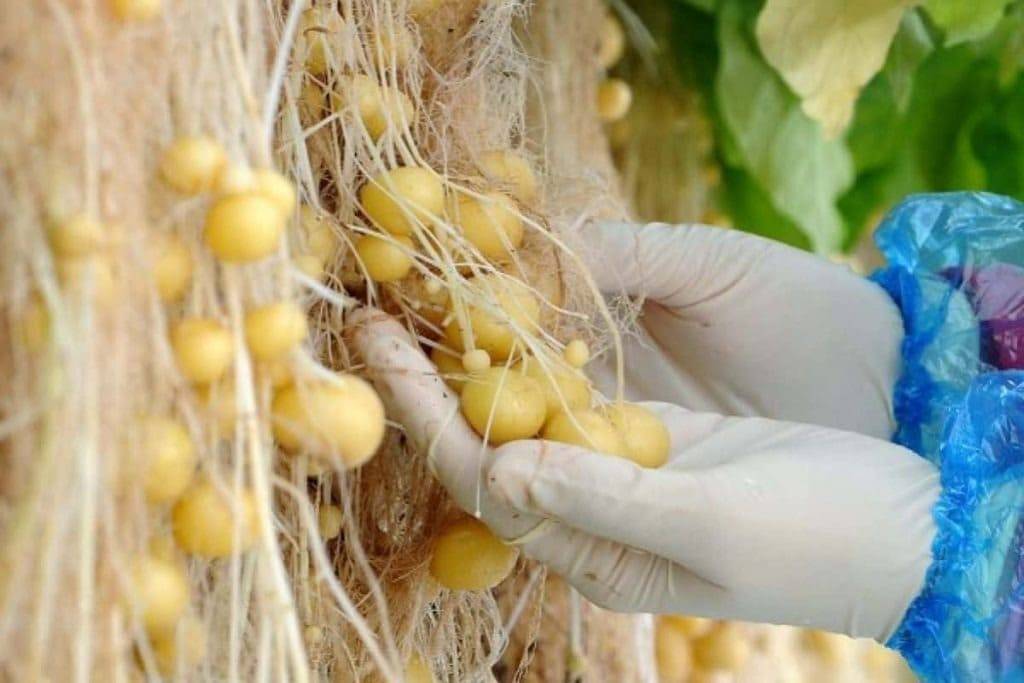
3. Do I Need To Worry About Pests And Diseases?
While Aeroponics reduces the risk of soil-borne diseases, it’s essential to monitor for airborne pests. Regular pruning and maintaining a clean environment can help prevent issues.
With this effective and modern method, your spuds will flourish suspended in nutrient-rich mist and reward you with a bountiful harvest. So, gear up to embrace the benefits of growing potatoes without soil, where the mist becomes the medium and your harvest becomes the talk of the town.
